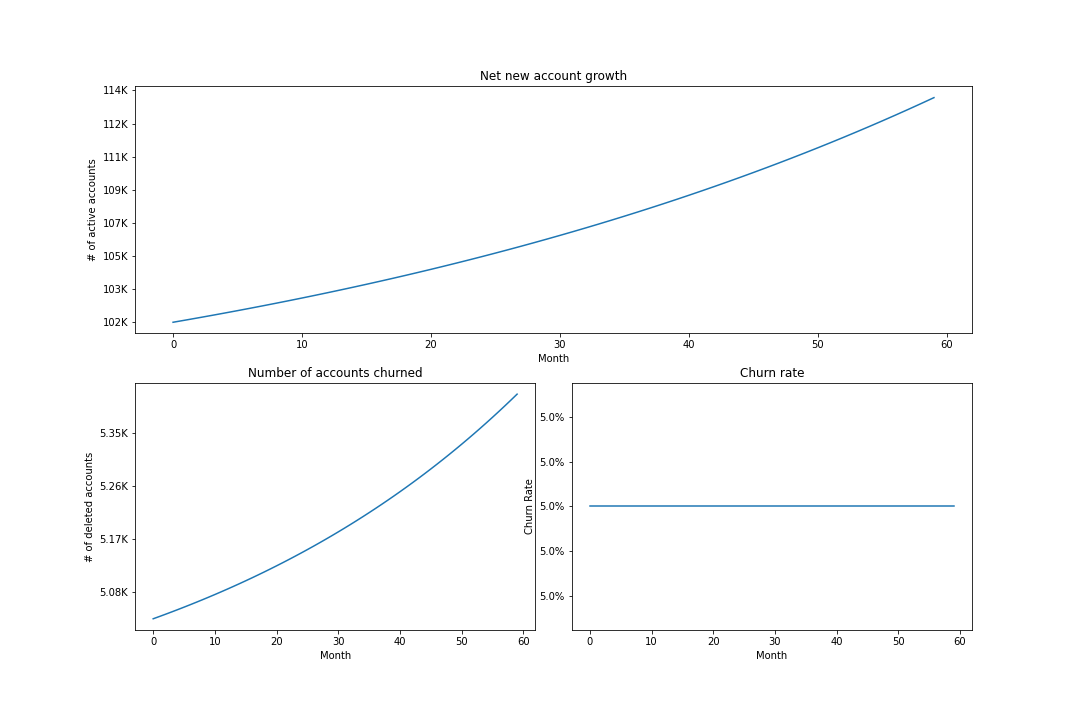In this post I want to break down a question I received on churn’s relationship to sales growth. In the end, we’ll both have an answer to this question, and more insight into churn’s effects on a business.
The question reads:
“What direction does churn tell us to go? If churn is based on all deletes, would churn go consistently go down b/c deletes within the month are relatively low when compared to the total customer base? So I’m curious what story this is telling.”
Before we dive into the answer, it’s important to consider under what conditions this question is being asked.
From the question, we can infer that sales growth appears to be greater than the churn rate. This is a good position for a business, as the opposite means you’re losing customers faster than you’re getting them!
So the question breaks down to two parts:
- What is the positive direction for churn to head?
- Why does (or does not) churn go down if sales growth is high?
What is the positive direction for churn to head?
Churn is the proportion of customers that leave within a period. So the answer to this will always be lower churn rate is preferable, you can read why here.
In fact, some businesses are blessed with negative churn, in which their accounts expand at a faster rate than which they decline.
Why doesn’t churn naturally go down if sales growth is high?
Churn rates don’t naturally go down as sales growth continues. This understanding, I believe, stems from a misunderstanding of percentages.
Take a churn rate of 5% and annual sales growth of 20%. If we plot this out over 5 years, get the following series of graphs:

From these graphs, we can observe the following:
- The sales growth of 20% increases our total customer base consistently
- The number of deletes grow as our customer base does
- This is because the churn rate remains at a constant 5% during the period.
Although sales growth outpaces churn, the absolute number of deletes grows in line with the total customer base, therefore holding the churn rate steady.
It seems obvious to say, but for churn to actually change the underlying churn rate needs to change.
Despite this, I think this question is really valid to ask. High sales growth can help mask the effects that churn has on a business, leading business leaders to take longer to take action on a growing churn problem.
Consider that most business leaders are presented with the churn rate graph and the net sales growth add. They don’t often see the increasing number of deletes per month. So in this sense, people may struggle to understand why churn remains the same despite high sales growth.
So where does sales growth have an impact on churn? Well, in times of high sales growth, churn may increase! This is because customers are more likely to churn early on in their journey when they are less committed and loyal.
So for months where you have a busy selling season, you may see a temporary increase in churn in the following months due to these customers leaving from the sales influx. This effect becomes more muted as your customer base grows.